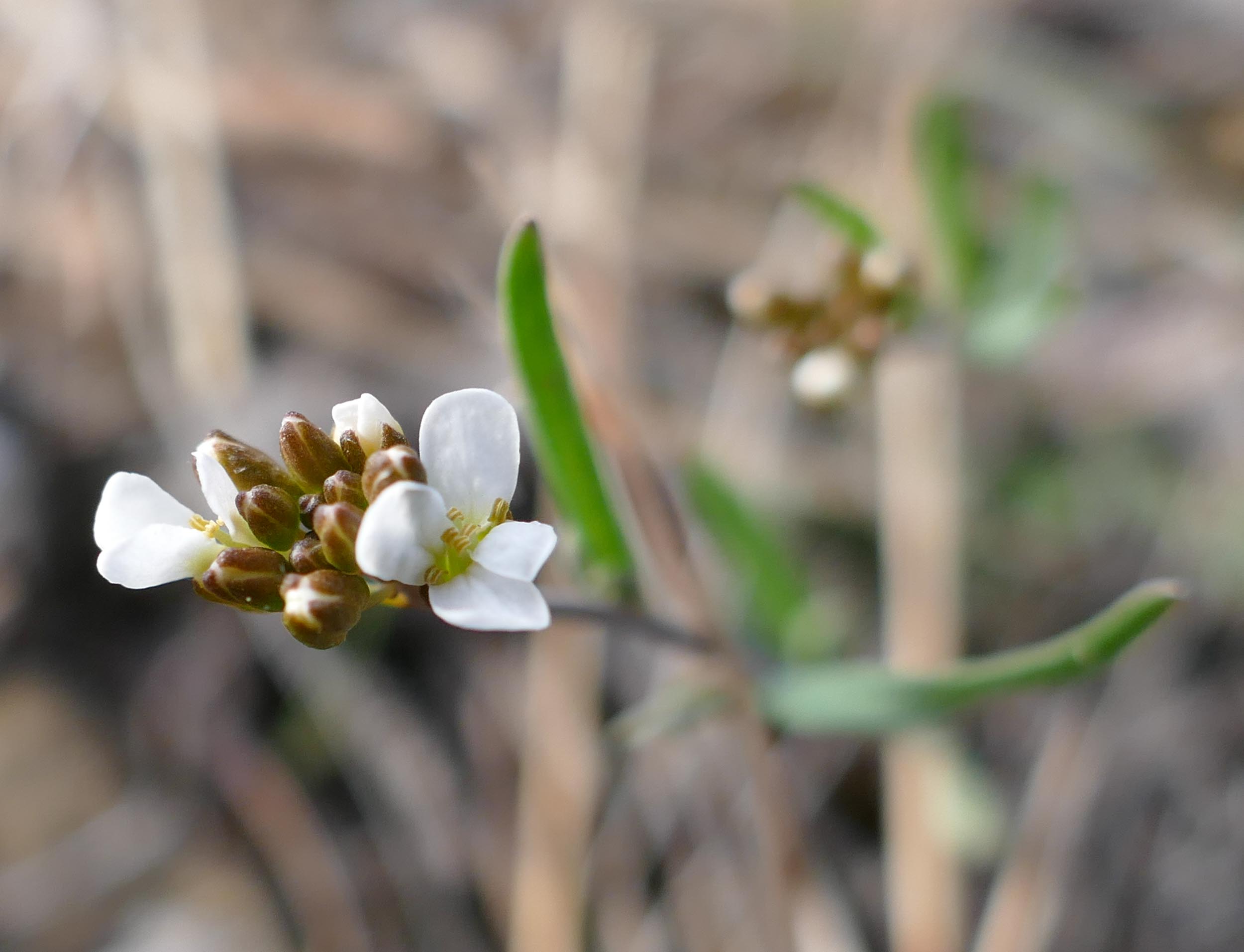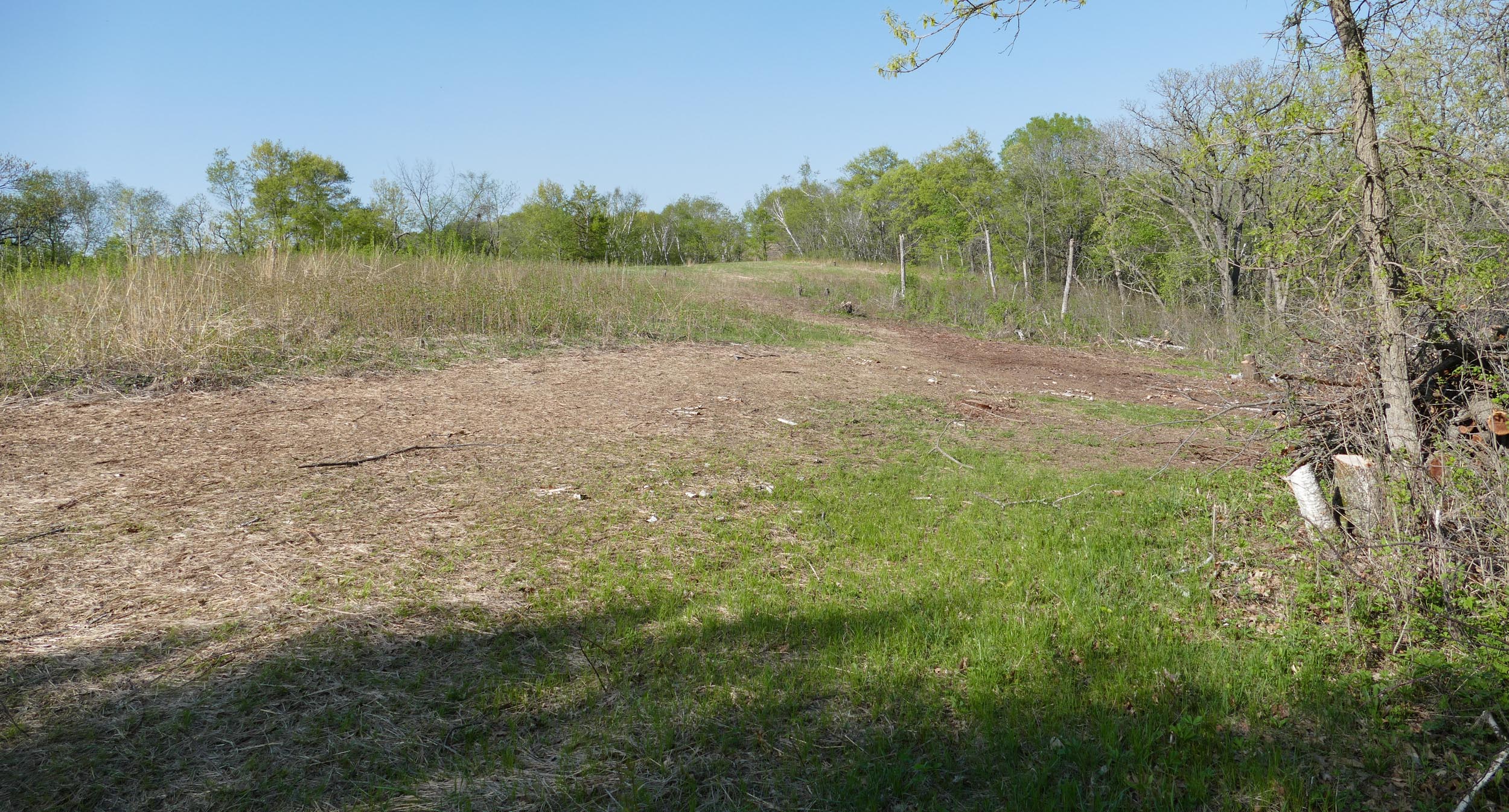[To see photos and stories of this prairie in other years, go to the links on the main Knife Edge Prairie page.]
We did two big projects on the Knife Edge Prairie this year, and a few smaller ones on the prairie and savanna at the end of the point.
1/18/2018 A wintry look at the entrance into the prairie. We’ve put a trail camera here, so now we can keep track of the animal traffic.
A few of the animals we saw here…
11/1/2018 Bobcat
8/23/2018 Black Bear
10/22/2018 Lots of deer battles
2/11/2018 Trail out to the point
Our friend Todd did more clearing work around the edges of the prairie. We asked him to cut the ‘weed’ trees around the edges so the prairie would reach all the way to the open-grown oaks that surround it – he cut mostly birch and walnut. Mike and I piled the cut trees onto a few big piles back in the woods. There’s still brush to clear, but the prairie area is now larger and more open.
2/21/2018
2/21/2018 Lots of cut birch trees
2/26/2018 A day when it was warm enough that we could sit on the bench.
4/22/2018 Still working on clearing those cut trees
4/22/2018
4/24/2018 Sand Cress blooming on the point
5/15/2018 This is the raspberry thicket at the beginning of the path to the point. Todd cut most of the walnuts that were in here, but there’s still a raspberry problem. Under and in between the raspberries are nice natives: Jack-in-the-Pulpit, Poke Milkweed, Showy Goldenrod, Monarda, and Asters.
5/15/2018 The cut trees are mostly cleared. The edge of one of the piles is on the right.
5/15/2018 The prairie beginning to green up.
6/21/2018 Prairie in the middle, with brushy edges.
7/28/2018 The main prairie area is beautiful and diverse, but it has a thick growth of aspen and gray dogwood sprouts that become taller and more prominent as the year progresses. We mow them every spring, but by July, they’re starting to get very tall.
7/28/2018 This shows an area with many aspen sprouts. Both aspen and gray dogwood are clonal, so they’re complicated to get rid of. I’ve discovered that I can discourage – if not quite get rid of – them by cutting and treating each stem in a large area. That seems to set back the root system enough that they don’t dominate as much in subsequent years.
8/12/2018 This is an area where I’ve cut and treated aspen and gray dogwood in the foreground, but not farther back.
7/29/2018 Mike cut sumac on the steep west facing slope of the point.
8/14/2018 Rough Blazing-star is beginning to bloom. There was more of it here this year than I’ve ever seen.
8/17/2018 And more monarchs this year than the last few years. We counted over 40 one day in the Blazing-star just on this remnant.
8/26/2018 Here’s another spot where I’ve cut and treated aspen and gray dogwood in the foreground.
8/30/2018 This was another spot thick with aspen and gray dogwood. But whenever I worked here, I would get stung by a wasp. After about 5 stings – one a day – Mike weed whacked it to expose the wasp nest. After that I could safely avoid the wasps, so I went over it again, cutting and treating stumps.
8/30/2018 This area was one I cleared of aspen and dogwood in 2017. It looks pretty good this year – not many sprouts have come back.
We did one more short project – clearing trees and brush from the bottom of the point, on the west-facing slope just above cabin road. That lower part of the hill has very thick brush, and we thought it might be easier to start at the bottom, and work up to the clearer part. We’ll see – it may just be too hard. We worked one whole morning, and didn’t make much progress.
6/14/2018 We cut many of the smaller trees – mostly walnuts – and brush – prickly ash and dogwood.
6/13/2018 We girdled the large walnuts.
6/14/2018 This is the way the project looked from the top, looking down the hill.




























